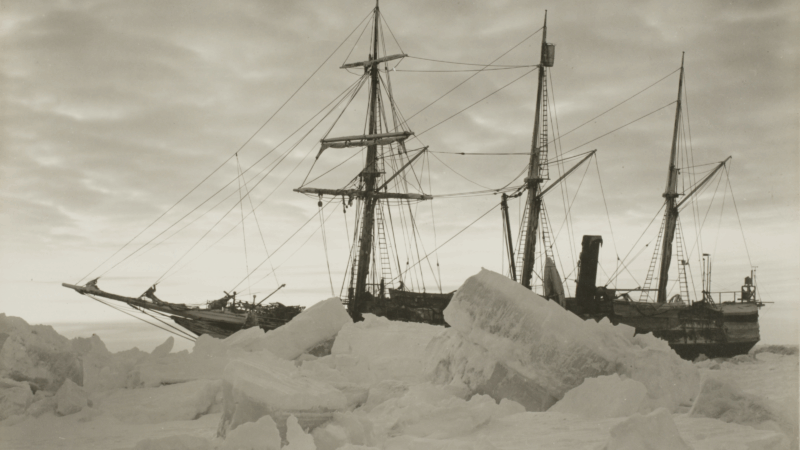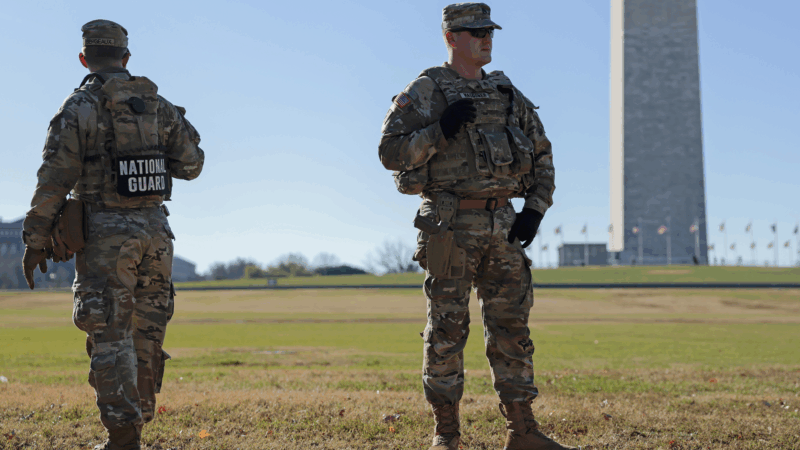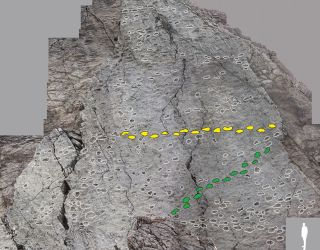Famed polar exploration ship Endurance not as strong as legend held, researcher says
What if one of the most famous and formidable Antarctic exploration vessels in history, whose crew’s story of shipwreck and survival has been told for more than a century, wasn’t as strong as legend had it?
A new research paper about the vessel Endurance casts doubt on some common beliefs about explorer Ernest Shackleton’s ship, particularly that it was one of the most well-built ships of its era and that it went down due to the loss of its rudder after becoming trapped in sea ice in 1915.
“Neither of that is true,” said Jukka Tuhkuri, who wrote the paper and is a professor at Aalto University in Finland, where he studies sea ice and arctic marine technology. “It was not a strong ship compared to other ships of its time, and it did not sink because of the rudder.”
Tuhkuri conducted ice science research aboard the 2022 expedition that located the wreckage of Endurance. The trip got him curious about why the ship sank. He spent the intervening years conducting a technical analysis and combing through historical records, including drawings of the ship, photographs and personal letters.
His paper, published Monday in the journal Polar Record, argues that Endurance had several structural shortcomings that made it ill-suited for the icy conditions of polar exploration and that Shackleton was aware of its weaknesses.
Shackleton alluded to the ship’s deficiencies in a letter to his wife, where he wrote that Endurance was “not as strong as [his earlier ship] Nimrod constructionally” and that he would “exchange her for the old Nimrod any day now except for comfort.” Shackleton and his crew got within 97 miles of the South Pole on the 1907-1909 Nimrod expedition.
Design flaws doomed Endurance, paper argues

According to Tuhkuri, Endurance was originally named Polaris and was created for Arctic tourism before Shackleton bought it to use for polar exploration. The ship was built to withstand collisions with ice floes at the ice’s edge, where polar bears could be found hunting.
“But Shackleton took it into pack ice that puts compressive loads on the hull,” Tuhkuri said. “And that’s a different type of loading, and it requires different details in the hull, and those were not there.”
In 1914, Shackleton led an expedition of 27 men on two ships — Endurance and Aurora — to Antarctica with the goal of traversing the continent on land. Shackleton and the crew of Endurance sailed to one end, while Aurora went to the other.
But before Endurance could reach the shore, it got snarled in dense sea ice in January 1915, leaving the ship and its crew stranded. The men lived on the frozen ship in the Weddell Sea for months but were ultimately forced to abandon it that October, taking lifeboats and a small amount of supplies. Endurance sank on Nov. 21, 1915. Shackleton and all members of the Endurance crew eventually made it to safety and survived. (All but three men from Aurora were rescued.)
The ship was crushed by ice

Sea ice is not one flat piece of frozen water, according to Tuhkuri, but rather a “mosaic” of different-sized ice floes pushed around by wind and currents in “constant, messy motion.” Endurance drifted in frozen ice for a while, but eventually the changing directions of the ice squeezed the ship and ultimately sank it, he said.
Tuhkuri said that Endurance had weaker pine deck beams and oak and pine frames than other comparable ships of the time. But certain design choices also made the ship’s hull vulnerable, he said. The long machine room weakened it, and the hull lacked diagonal support beams found on other polar exploration vessels.
Tuhkuri also noted that while damage to the rudder sprung a leak in the ship, crew members were able to keep it under control; the more significant damage to Endurance was the “tearing of the keel [the structural backbone running along the bottom of the ship], which broke the ship into two halves,” he wrote.
Tuhkuri said he doesn’t want to detract from the legacy of Shackleton’s voyage but, rather, add a new detail to the historical record.
As he writes toward the end of his paper: “Maybe Endurance was a strong and heroic ship in a poetic sense; in an engineering sense, unfortunately, it was not.”
FBI Deputy Director Dan Bongino says he will step down in January
Bongino's tenure was at times tumultuous, including a clash with Justice Department leadership over the Epstein files. But it also involved the arrest of a suspect in the Jan. 6 pipe bomber case.
Federal court says troops can stay in D.C., and hints at prolonged deployment
A federal appeals court in Washington, D.C. has ruled that National Guard troops can remain in the city for now. That decision comes after a different federal appeals court ruled that troops must leave Los Angeles earlier this week.
Jack Smith defends his prosecutions of Trump in closed-door session in Congress
The former Justice Department special counsel told the House Judiciary Committee that his team developed "proof beyond a reasonable doubt" that Trump took part in a criminal scheme to overturn the 2020 election.
A Chinese man who filmed secret footage in Xinjiang risks deportation from the U.S.
Guan Heng sailed to the U.S. by boat from the Bahamas after publishing footage he filmed of purported detention camps in China. He has been held in immigration detention since August.
‘Harry Potter’ fans are flying to Broadway to see the original Draco Malfoy
Almost eight years after Harry Potter and the Cursed Child opened on Broadway, Tom Felton, who played Draco Malfoy in the films, is now playing him as an adult onstage.
A photographer discovers miles of dinosaur tracks near Italy’s Winter Olympic venues
A nature photographer stumbled upon thousands of 210-million-year-old dinosaur tracks in Italy's central Alps, near where some Olympic skiing and snowboarding events will be held in February.









